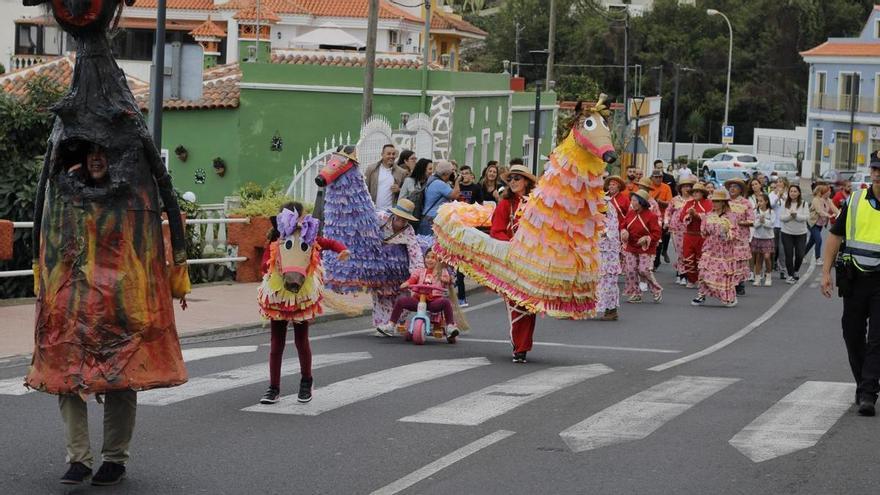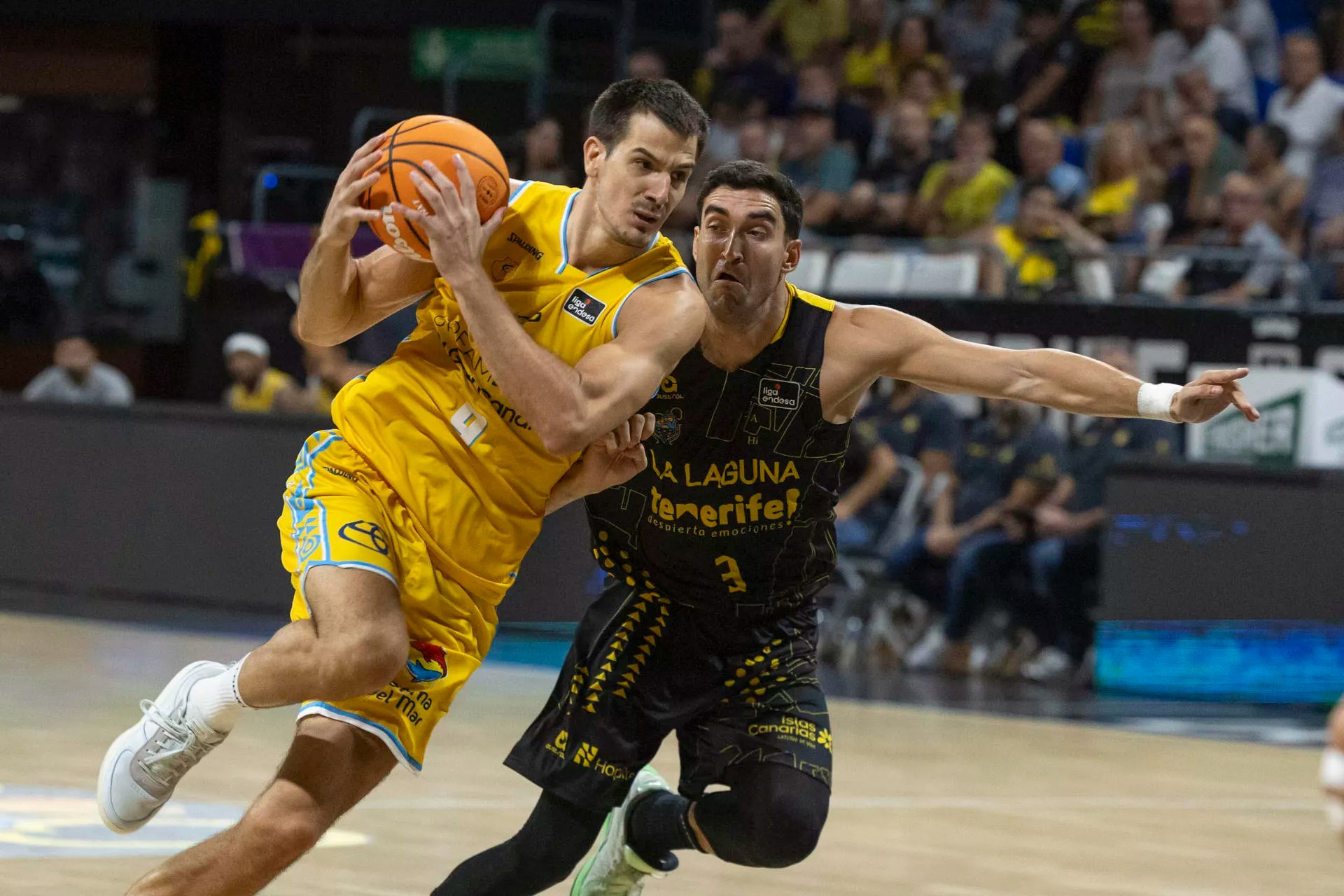
students and teachers of Alternation Training Plan with Employment (PFAE) El Tanque Designwith the support of Tanker Town Hall, have produced a book that vindicates and protects the old tradition of the liveries of the municipality. The work The liveries of El Tanque. fire and hackpresented last Friday, rescues all the details of a tradition with more than a century of existence that is repeated twice every year: at sunset on the eve of the festival of Our Lady of Good Journeyin the historic center, every August 30, and on the eve of the festival of the Holy Christ of Calvary of El Tanquethe third weekend of October.
Currently there are six festivities dedicated to liveries in Tenerife. They are organized in Tegueste, Valle de Guerra, El Palmar, Buenavista del Norte, El Tanque and Icod de los Vinos. In each of these places they have unique and also shared characteristics. The tank liveries have “a group made up of the devil, the little angel, the dancers and the musicians, who depart to the sound of the tajaraste towards the church. This ritual has remained stable over the years, with the exception of the materials used for the costumes and the construction of the devil. Currently wallpaper, artificial and powdered wigs, necklaces and other accessories are used. In the center of the historic center the tradition is similar. Its soundtrack, tajaraste and poetry.
good over evil
The book details that “just as happens in El Palmar and in Buenavista del Norte, the Liveries of El Tanque pursue a line of thought and ideals more related to traditional Canarian folklore than to the memory of historical events that occurred outside the archipelago. At Liveries of El Tanque they seek to claim the victory of good over evil. The little horses are one of the most international features of Las Libreas de El Tanque: «In the Canary Islands several dances of little paper horses are still in force (…) Oral tradition locates their origin with the return of the Canarian emigrants from America, however, the Mediterranean referents indicate a European provenance”, according to Ricardo Fajardo in Festive manifestations of a zoomorphic nature in the Canary Islands.
Fajardo relates the little horses to some celebrations in the south of France, specifically in Provence: «The French influence in the Canary Islands has been constant and important since the conquest and colonization. This type of dance with cardboard and paper horses They must have been abundant in the towns of the Canary Islands, gradually being lost due to the changing attitude of the Church and the enlightened current».
in interviews Ana Emilia Carmenaty and Carmen Rosa Carmenaty made for the book Jose Hernandez, a resident of El Tanque, stated that “during the festivities of the Santísimo Cristo del Calvario, the dance of Las Libreas and Los Caballitos were celebrated together. This tradition, however, was paralyzed for several decades until in 2003 when the Festival Commission of the Holy Christ of Calvary and the El Tanque City Council requested the Little Horses of San Cristóbal de La Laguna. As of that year, the little horses returned to the municipality, this time with their own manufacture. There are currently two, one larger than the other, which some call the Giralda.
Students and authors feel “very proud” of the result of “hard work” both in the creation and in the layout of a book that has meant “learning in every way” for them. They emphasize that “it has given us the opportunity to learn in depth one of the most important traditions of our municipality. We have been able to access all the information found in this book, through the work carried out in the interviews with the elderly people of the municipality and the components of the associations that have been concerned with keeping this tradition alive for years. On the other hand, It has helped us to acquire professional skills».
This pride is also based on the important work of cultural and ethnographic rescue that this work means, which in his opinion «will mean conserving for the new generations a tradition which is a means of integration for the community, where dances, fires, stories and beliefs are shared».
“A deep-rooted tradition”
For the tanker mayoress, Esther Morales (PSOE), «the liveries of our municipality are already a centuries-old and deep-rooted tradition, according to the nonagenarians of the municipality. With our traditions, values are learned, the identity of our municipality is strengthened, and they help us to stay connected to our culture.” He stresses that the liveries of The tank «They were built with a frame of reeds that was lined with remains of old fabrics, goat skins and horns, in which some attributes were highlighted, such as exaggerated lips painted in red and the bulge on the chest, which identified the devil, They danced through the streets of the town and around the square, making noises with pots and shears of animals, causing a lot of noise and commotion among the people that surrounded them, especially the terrified boys and girls, who, clinging to their relatives, watched as the firecrackers and flares they carried burned.
«The tradition has lasted over time, with some exceptions such as the materials that are currently used in clothing. The accompanying music is very important, always to the sound of the tajaraste”, he recalls Esther Morales.
In the making of the book The liveries of El Tanque. fire and hack The management and teaching team of the PFAE El Tanque Design, made up of Sergio Rodríguez Rodríguez, Aurelia Lorenzo Zamora, Alejandro Federico Pérez García, Alberto J. Cordero San Martín and Jorge Miranda Arencibia, and the student-workers of this initiative: Antonio A. Rodríguez Cabrera, Blanca Rosa Martín Dorta, Carmen Rocío Rolo González, Cathaysa López Meneses, Eleazar González Pérez, León Figueroa Estrella, María Ángeles Herrera Meneses, María Candelaria Méndez Fortes, María Idelma Hernández Rodríguez, María Lourdes Linares Meneses, Margarita Méndez Álvarez, María José Curbelo Morales, María Rosa Mendaz Hernández, Mayra Flores Martín and Yaiza Acevedo González. Carolina de León Pérez collaborated with advice and text editing.
















